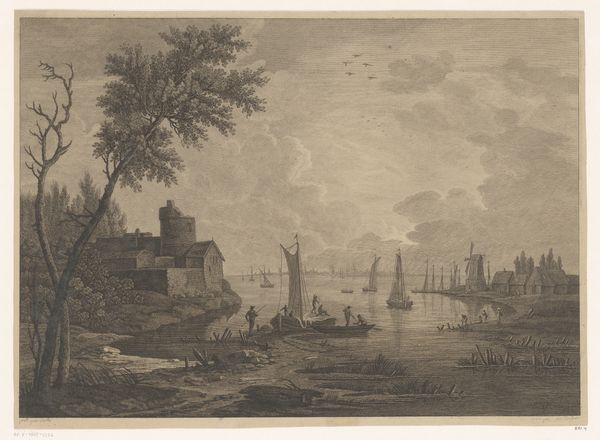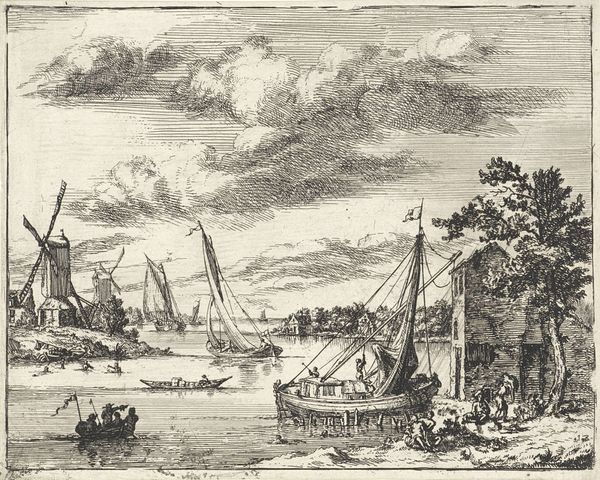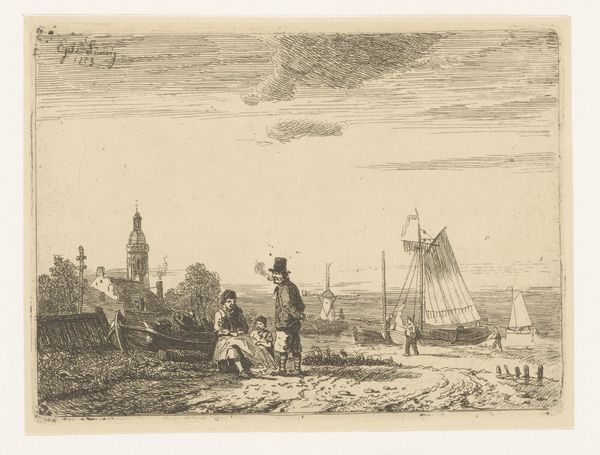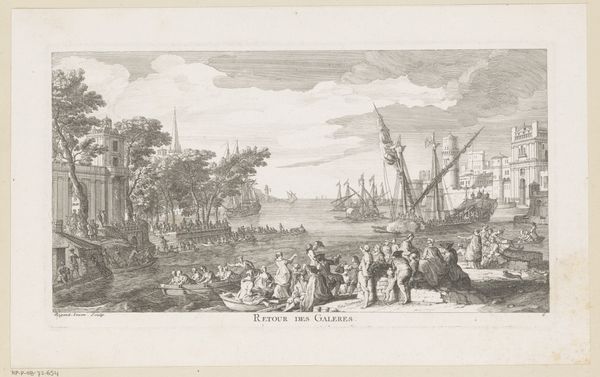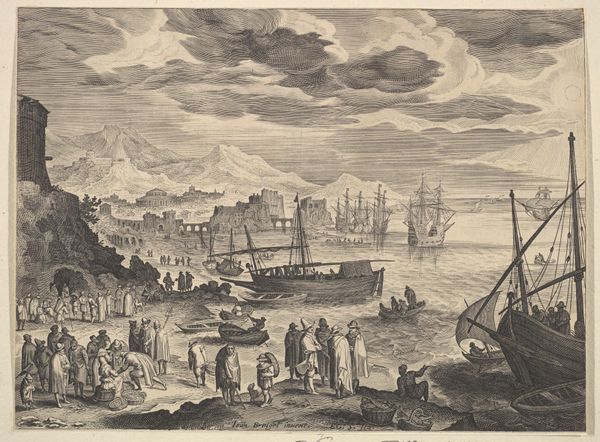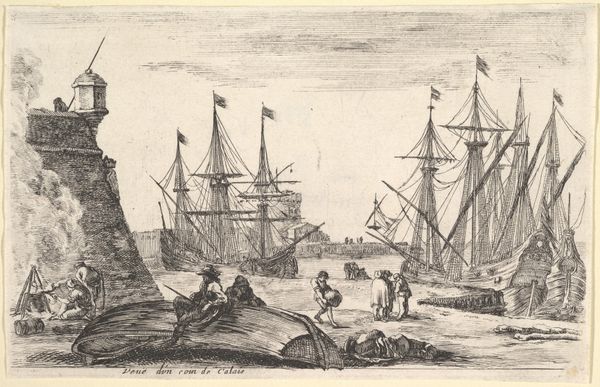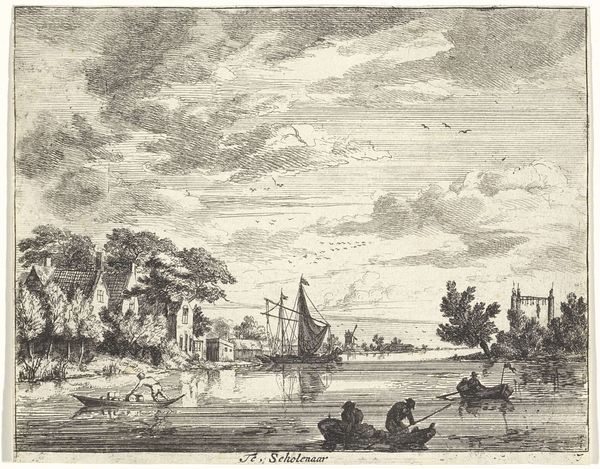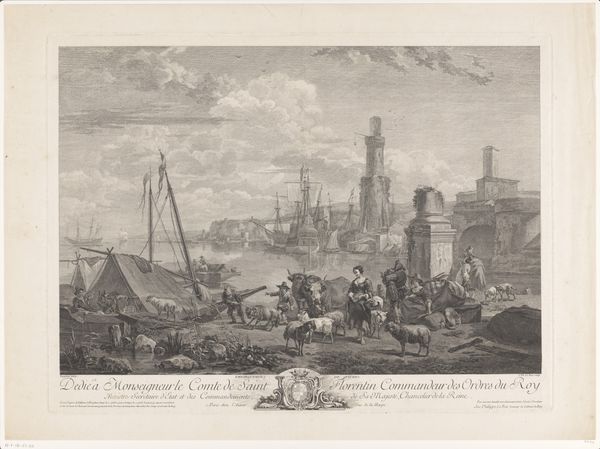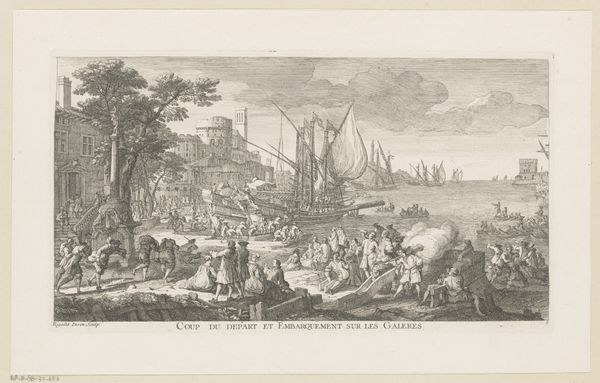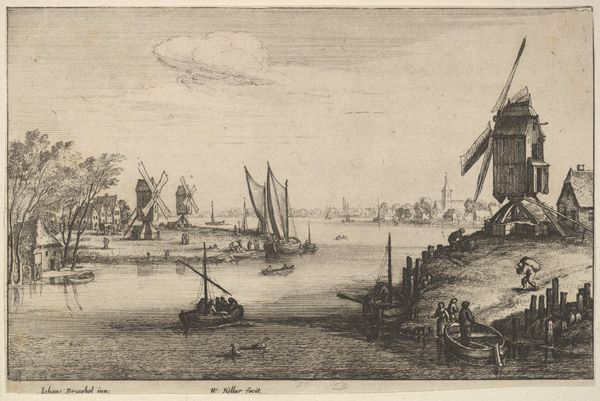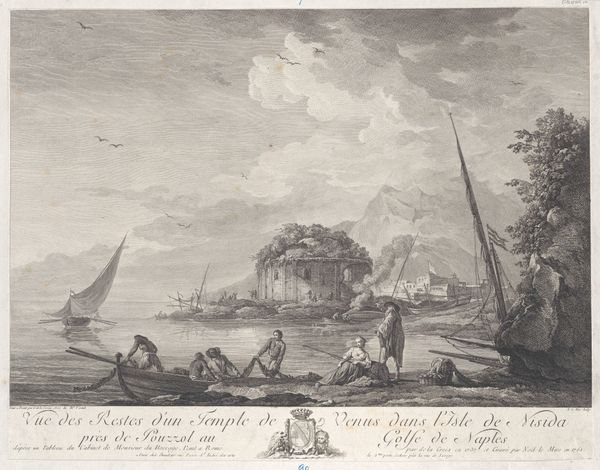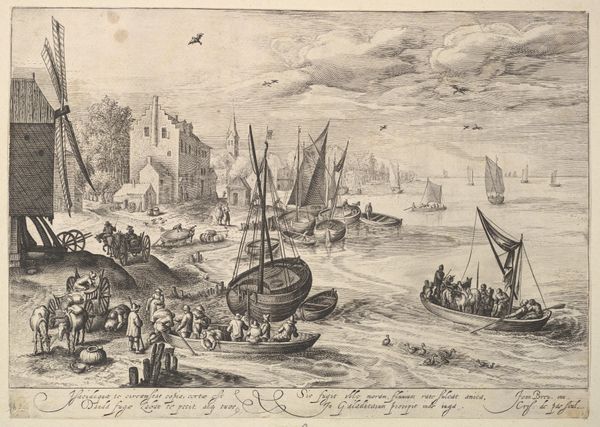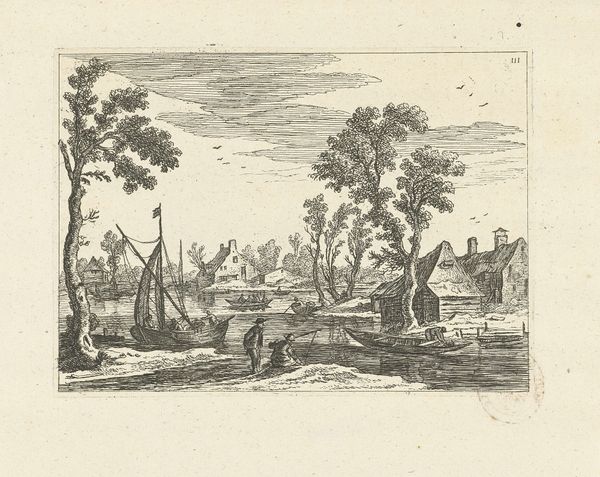
drawing, print, engraving
#
drawing
#
dutch-golden-age
# print
#
landscape
#
form
#
line
#
cityscape
#
engraving
Dimensions: sheet: 7 3/8 x 11 1/4 in. (18.7 x 28.6 cm)
Copyright: Public Domain
Curator: Immediately, this evokes the daily grind – that constant push and pull of labor. The detailed linework and sharp contrasts give it such a distinct, almost tactile feel. Editor: Aegidius Sadeler II’s "Coast Scene with a Windmill", probably made sometime between 1565 and 1629, is presented as an engraving – a testament to the development and pervasiveness of printmaking during the Dutch Golden Age. Its location at the Metropolitan Museum speaks to its valued preservation. Curator: Look at how the figures are arranged – the fishermen hauling nets, the individuals seemingly weighed down with burdens...It shows the mechanics of resource extraction and distribution in these early economies, where the work being done is very physical. Editor: And those sharp, clean lines! This was a period of major political and social shifts, with complex gendered divisions of labor. The division here between land and sea also emphasizes Dutch identity connected to waterways. Note, though, that the laborers' bodies and identities are flattened out, almost subservient to the detailed landscape itself. How were class dynamics reproduced through these visual systems? Curator: Precisely. The medium itself highlights the mechanical processes – how each line required skilled labor. Even the choice of scene highlights specific types of labor involved in producing certain economies. But it's so neatly rendered! What’s shown tells a much bigger story when you zoom into the human scale of the laborers themselves! Editor: Exactly! While it showcases the “charm” of daily life, it’s impossible to divorce it from those systemic structures. Art becomes part of larger narratives around trade, gender, and who has access to mobility and resources! Curator: Well said. I leave with a clearer vision for that unseen workforce required for producing not only these physical artworks themselves but Dutch prosperity itself. Editor: Me too. Hopefully, visitors can consider who benefits and loses in the scenes before them—even centuries after their creation!
Comments
No comments
Be the first to comment and join the conversation on the ultimate creative platform.
